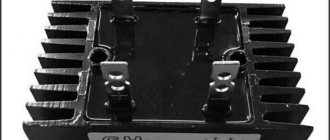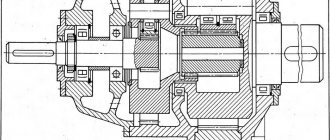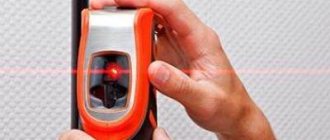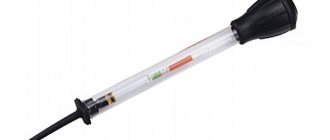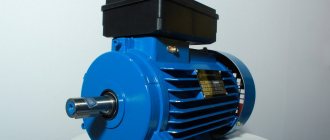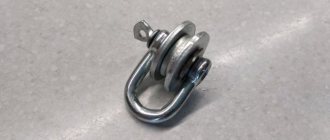Determining the density of a liquid and the specific gravity of diluted substances is possible using a hydrometer. Its operating principle is based on Archimedes' law. This property has made it possible to find widespread use of the device in various spheres of human activity. For example, car enthusiasts can use a hydrometer to check the density of electrolyte and antifreeze. In everyday life, this device can measure the strength of alcoholic beverages, the fat content of milk, the salinity of the solution, and the concentration of sugar. These devices differ only in the weight of the weight and the scale.
Principle of operation
The operating principle of the hydrometer is based on the hydrostatic law. According to it, the buoyant force acting on a submerged body is equal to the weight of the displaced fluid. That is, the volume of a body located in a liquid is equal to the volume that it can displace. Since different types of substances have different densities, the device immersed in them will sink to a certain depth, which corresponds to a certain density.
Measuring density with a hydrometer involves immersing it in the substance being measured and waiting for the end of the equilibration process. After equilibrium appears, the device floats freely, and reading data from the scale will not be a problem. How to use a hydrometer becomes clear from the figure below.
The process of measuring the density of a liquid using a hydrometer
Checking and replenishing the electrolyte level in the battery
The main condition for the normal operation of a standard car battery is a normal electrolyte level. Of course, this statement is only true for those batteries that use a liquid medium to operate charged plates. In gel batteries, for example, it is impossible to check the electrolyte level, because the medium itself is gel-like, and the battery case cannot be disassembled. But most motorists prefer the old versions of acid batteries that operate in a liquid working environment. Today we will look at a situation where the electrolyte level in the battery decreases.
Today it is quite difficult to talk about certain battery problems, since the types of devices, their varieties and the complexity of repairs today make us think about the meaning of the service - for many it has become easier to buy a new battery and forget about the problem. Manufacturers have actively begun to produce maintenance-free batteries, that is, batteries whose housing is extremely difficult to get into. After the electrolyte level in such devices decreases, they are simply disposed of and new ones are purchased.
Battery maintenance and adding electrolyte to the system
Let's start with the fact that a battery that has already begun to reduce its electrolyte level often has a serious problem. In such a battery, the working plates could fall off, or a leak could form in the device body, which is even more dangerous. In such cases, the electrolyte evaporates or leaks, coagulates or reforms. In a word, it becomes an order of magnitude smaller.
Due to this decrease in the amount of working fluid, plates that should not touch each other come into contact. Also, the upper working element, which holds the charge, is not covered with the working fluid, which quickly destroys it. Therefore, the electrolyte level in the battery must not be allowed to decrease, and the loss can be compensated for in the following way:
- make sure that you have a serviceable battery at your disposal, that is, you can get to the inside;
- unscrew all the top plugs to assess the electrolyte level in different battery banks;
- carefully inspect the battery for leaks or cracks from which liquid may ooze;
- add distilled water to the tanks to a level determined by the manufacturer as optimal;
- leave the plugs open and connect the charger to the battery to resume charging;
- periodically monitor the charging process, assessing the condition of the electrolyte and the visual properties of the inside of the battery;
- If the electrolyte boils or becomes cloudy after turning on the charger, you should get rid of such a battery and buy a new one.
Cloudy liquid inside the battery indicates that your battery is no longer capable of holding a normal charge. The top layer of lead plates or other elements that are responsible for battery operation and charge retention for a long time has begun to deteriorate. Such a battery can fail at any time, and in winter its operation is not at all possible.
Of course, most problems with car batteries are detected in winter, when the battery is immersed in extreme operating conditions. However, even in the warm season, sudden leakage of liquid or evaporation may occur due to disruption of the normal operation of the device. Often, a sharp drop in the fluid level in the battery will indicate the need to replace this element.
Battery restoration work or buying a new battery?
When working with a car battery, you need to be extremely careful, because most modern batteries use dangerous sulfuric acid as an electrolyte. By adding distilled water, you reduce the density of the electrolyte, which reduces the battery's performance. But this is the only way to somehow extend the life of the device and delay the purchase of a new battery.
However, do not flatter yourself with hopes that distilled water added to the electrolyte will be able to completely restore the normal operation of the battery. Often it is not possible to completely restore the battery at all. After a short period of time, the battery will require intervention again. If the battery begins to show character, it is better to change it and not expose yourself to the danger of an unexpected breakdown. The main factors for choosing a new battery are as follows:
- determining the nominal battery capacity, which is recommended by the manufacturer (sometimes you can buy a battery 10 Ah more than recommended);
- selection of the required starting current with a possible change from the factory characteristics only in the direction of increase;
- reviewing in the store only those battery options that fit perfectly in shape and will be installed in the car without any problems;
- selection by manufacturer, assessment of battery reliability based on various ratings and reviews, purchasing only official equipment from well-known brands;
- visual assessment of the battery in the store or upon delivery, checking for various physical damages and unevenness of the case;
- assessment of the battery's production life - batteries that have been in the store for two years can already be considered used.
The service life of a car battery is 7-9 years maximum. But this period begins to count not from the moment the battery is installed on the car, but from the moment the element is released from the factory. Therefore, do not buy batteries on promotions and discounts, because in this way sellers most often try to get rid of illiquid products that will soon not cost a penny.
Also, stop experimenting with technical specifications. Over time, many motorists begin to feel that they know their vehicle much better than the manufacturer. In fact, the best technical parameters are specified in the operating instructions. Experiments with volume, starting current, size and other parameters do not end well for the machine. We suggest watching a video with all the battery tests and some tips for preparing the battery for winter use:
Interpretation of the result
If the electrolyte density readings in one of the battery cans are lower than the others, this means that there is a short circuit in it. Accordingly, the battery is not working properly. It cannot be restored.
An equal density value in all jars (±0.01 g/cm3) characterizes the degree of its charge and the need for certain actions.
Low values of the entire battery may be due to the following problems:
- the drive is very discharged;
- the battery is defective;
- The battery is outdated and needs to be replaced;
- The power supply is very worn out because the engine is constantly running on it.
Device types
All hydrometers according to the measurement principle are divided into two types:
- with constant mass, called densimeters;
- with constant volume.
The scale of a constant mass hydrometer can be graduated:
- density units;
- percentage of volume concentration of substances;
- percent of the mass content of impurities.
The densimeter consists of a glass flask made in the form of a float. At the bottom of the hull there is ballast with a certain weight. The upper part of the hydrometer is usually narrowed. It contains a fixed scale. For convenience, determining density with a hydrometer uses a built-in thermometer. Waiting for balance may take 3-4 minutes.
GOST 18481 classifies the purpose of hydrometers. According to the standard, the following types of devices are distinguished:
- hydrometer for petroleum products, helping to test oil, gasoline and other types of fuel;
- lactometers that allow you to find out the characteristics of milk;
- hydrometer for electrolyte, used to test batteries;
- alcohol densimeter, which determines the strength of alcohol;
- to check the density of urine used for medical and laboratory research;
- general purpose device, for example, hydrometer AON 1;
- saccharometers, determine the concentration of sugar-containing liquid;
- salt meters that help control water hardness.
Example of a lactometer
In the case of constant volume hydrometers, there is no scale. A ring mark is used instead. The measurement process occurs by selecting weights placed in the device plate. According to the instructions, after determining the weight of the weights, the density of the liquid is calculated.
What to look for when choosing
What kind of hydrometer do you need?
AlcoholAutomotive
Main selection criteria: density range and scale graduation.
Devices can be made of glass or plastic. In some models, the float is located in the body and is located together with the bulb. This makes it possible to take the solution from a closed container, which can be useful if it is not possible to place a float.
Other features worth noting:
- It is better to purchase a glass hydrometer. Glass is considered a durable material, resistant to various compounds and aggressive environments.
- Plastic flasks lose transparency over time. This may affect the accuracy of the result.
- When choosing a device with a pear, pay attention to the quality of the rubber. It must remain elastic at different temperatures.
All hydrometers have a scale. It can be digital or color. Digital is the choice of professionals. It is considered highly accurate. Used where you need to know the accuracy without errors. The color scale is suitable for approximate measurements. It is divided into several colors. Used to evaluate technical fluid.
Hydrometer parameters
Regardless of the type of hydrometer according to GOST, all devices have the following parameters:
- range of readings characterizing the lower and upper limits;
- error limits that determine how much a hydrometer measurement can differ from the true value as much as possible;
- scale accuracy and bit depth, showing the discreteness of the received data;
- the presence of additions, for example, a thermometer.
To simplify measurements, the battery hydrometer has a hollow tube and a suction bulb, which allows you to measure the density of the electrolyte without draining it from the battery.
Let's sum it up
Many car owners perform a certain range of maintenance activities on their own. By doing simple work with your own hands, you can save a lot of money, which is why this option for reducing the cost of operating vehicles is very popular. Battery maintenance is one such process. There is nothing tricky in this matter, so it is better to do the work yourself than to trust it to specialists for some money.
It must be remembered that the battery is one of the important components of the car; without the high-quality operation of this device, pleasant and reliable operation of the car is impossible. If you notice serious problems with your battery, the most logical thing to do is buy a new battery. But there are situations when the battery can be serviced and charged.
Sources
- https://zen.yandex.ru/media/avtotachki/chto-takoe-areometr-princip-raboty-i-dlia-chego-nujen-5ed3fc090eff8b3692c21992
- https://narkologiya-orel.ru/vina/areometr-svoimi-rukami.html
- https://drajver.ru/oborudovanie/shkala-areometra-dlya-akkumulyatora.html
- https://autogrm.ru/blog/areometr.html
- https://almazcar.ru/rejtingi/kakoj_areometr_luchshe_kupit_dlya_akkumulyatora.html
- https://autoopeka.ru/areometr-dlya-elektrolita-kakoy-luchshe/
- https://akkumir.ru/otvet/areometr
- https://vyborexperta.ru/raznoe/luchshie-areometry/
- https://mirsmazok.ru/antifrizy-i-teplonositeli/areometr-dlya-antifriza-kak-i-dlya-chego-on-primenyaetsya/
- https://KrymShina.ru/raznoe/areometr-dlya-elektrolita-kakoj-luchshe.html
Alcohol meter
The asp hydrometer has found wide application for determining the strength of alcohol-containing drinks both in everyday life and in production. When using an alcoholometer, the accuracy of measurements depends on the content of impurities. The body is usually made of glass, but metal options are possible.
To determine the proportion of alcohol in a liquid, it is necessary to lower the alcohol hydrometer into the container with the experimental substance. It is necessary to ensure that the Asp Hydrometer does not come into contact with the walls and bottom, otherwise the accuracy of determining the strength will be low. The recommended ambient temperature is 20°C. A household hydrometer-alcohol meter determines the strength in degrees from 0 to 95% alcohol in water.
The asp hydrometer has the appearance shown in the figure below.
Household alcohol meter
The asp hydrometer has possible variations:
- compact hydrometer for alcohol, allowing you to take measurements in a glass;
- vinometer, which determines the amount of sugar in alcohol during the fermentation process;
- a hydrometer for alcohol, the weight of which is adjusted for a specific alcoholic drink, taking into account impurities.
The household hydrometer asp does not have high accuracy and is used extremely rarely in laboratory measurements.
What happens if you use too diluted antifreeze?
At very low temperatures, diluted antifreeze crystallizes and forms a mushy substance. On the one hand, it will not cease to protect the engine and radiator from possible damage. On the other hand, it is impossible to operate a car in such conditions.
In addition, a mixture containing too much water will no longer adequately protect cooling system components from corrosion. As a result, sediment will accumulate on the engine walls, which will negatively affect its performance.
Hydrometer for petroleum products
The ANT hydrometer is a highly specialized device. It is used in the trading of petroleum products such as gasoline and in the oil industry. It is intended to assist in the control, certification and research of petroleum products.
The Ant hydrometer can be operated at temperatures up to 45-50°C. The optimal temperature range is from 20 to 22°C. When checking the density, the Ant hydrometer is placed in a container with liquid. If the walls and bottom are not touched, the readings are read.
The sizes of the devices are different. So, for example, the ant 2 hydrometer has a length of 300 mm, which is 200 mm shorter than ant 1. This allows you to measure the density of fuel in a smaller tank volume. In this case, the measurement accuracy is halved. This is due to the increase in the scale division price.
Hydrometers ANT
The Importance of Electrolyte Density
Lead-acid batteries are mainly used as car batteries. The electrolyte in them is sulfuric acid , or rather its aqueous solution. The normal operation of this component depends on its specific gravity. This state is also called the degree of acidity of the mixture.
It is measured in grams per cubic centimeter. Typical values are at normal temperature 25 degrees Celsius. Basic indicators:
- In the starter battery - 1.26-1.28.
- In hospital – 1.22−1.23.
The permissible deviation should not exceed 0.01 g/cm3. During charging and discharging, any battery evaporates a certain amount of water inside. This leads to an increase in the concentration of hydrochloric acid in the solution, which has a negative impact on the resource.
The intensity of evaporation depends on parameters such as consumables used to assemble batteries, the suitability and relevance of the equipment on which they are produced. Low density can occur due to the presence of a short circuit inside the housing when the plates touch, breaks, and too low a residual charge level.
It is known that reducing the volume of water that should be inside negatively affects the operation of the battery. Its excess can also lead to unpleasant consequences. Thus, overflowing the mixture over the edge leads to serious corrosion of the housing and surrounding parts, destruction of the contact terminals and severe dissolution of the electrolytic liquid.
Saccharometer
The ac 3 hydrometer shown in the figure below is used to determine the proportion of sugar in sugar-containing liquids. It gained the greatest popularity in the food industry.
Household saccharometer AS-3
The hydrometer has found application in determining the ripeness of fruits and vegetables. This question is relevant when producing juice from them. When the fruit ripens, the starch it contains turns into sugar. Testing with a saccharometer shows whether the fruit is ready for juice production.
Dependence of density on battery condition
In a real battery, this value is not constant, highly dependent on the degree of its charge. The more discharged a battery is, the lower the density of its electrolyte. The reason for this is the chemical reactions occurring in the battery. During discharge, part of the sulfuric acid turns into lead sulfate, the mass fraction of water increases, which means the density decreases. Charging the battery is characterized by the reverse process. Thus, the density can indirectly judge the condition of the battery at the moment. The higher it is, the greater the voltage at the battery terminals. True, high density is not always good. Sometimes, due to a malfunction of electrical equipment, the voltage of the on-board network increases and the battery begins to boil. Water evaporates first, which means the percentage of acid content increases. If the electrolyte hydrometer shows that the density is greater than 1.35, then urgent measures need to be taken. High acid content causes the active layer of the battery plates to shed. This process is irreversible and will certainly lead to a reduction in battery life.
